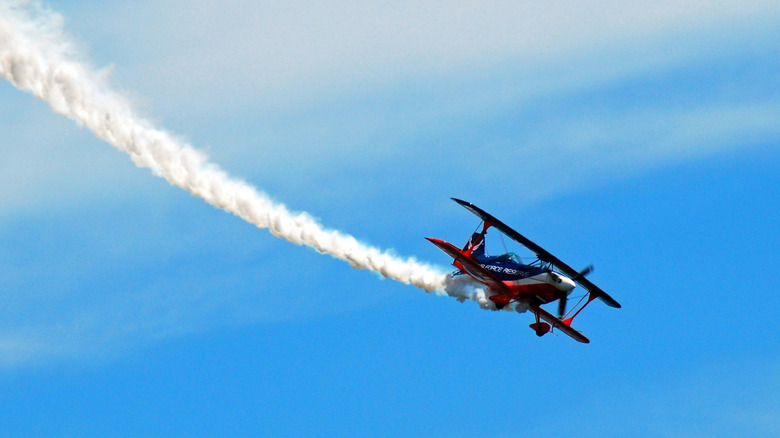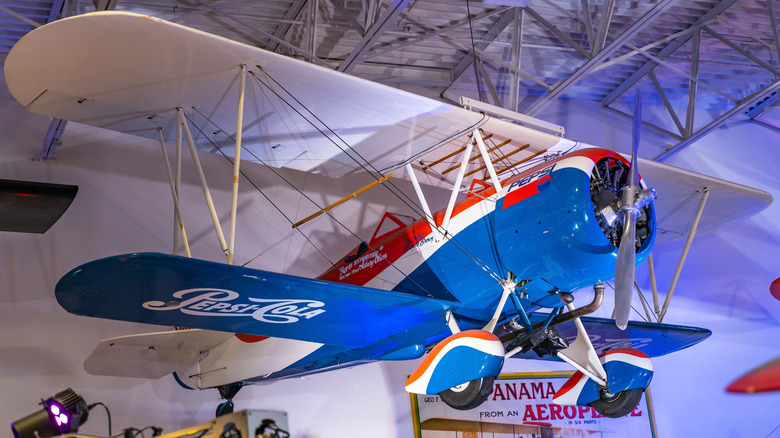How Do Airplanes Write Messages In The Sky?
Unless you live far out in the middle of nowhere, away from any flight paths, you will surely have noticed that planes and jets leave behind white trails, and the reason why planes and jets leave white trails in the sky is quite simple. They are known as contrails, which simply means trails of condensation — a by-product of jet engines. These are not harmful, despite the widespread conspiracy that contrails are actually chemtrails, meaning trails packed full of harmful chemicals.
While diving into the ins and outs of conspiracy theories is an easy rabbit hole to fall into, this article actually explores another type of trail left in the sky. Some planes, generally smaller and nimbler aircraft, leave purposeful messages in the sky. This is different from contrails, as the markings left behind are not a by-product of the engine, but rather a purposeful trail left to form a picture, pattern, or message.
The pilots who fly these planes and leave behind such messages are known as skywriters. While it may appear that the white streams are coming from the engines as per a jet, they instead are emitted via onboard smoke machines, which can be turned on and off at the pilot's command. The smoke machines are typically pressurized containers, full of oil. When switched on, the pressurized oil is released out and onto the plane's hot exhaust system, which immediately burns it off, causing a white trail of smoke to be left behind.
What purposes do skywriters serve?
Skywriting is an artistic and playful approach to message delivering. In an age where anyone can send a text or email, writing an important message in the sky is an exciting way to stand out from the crowd. Typically, skywriting is for momentous occasions, such as for carrying out a marriage proposal, or even for launching a captivating advertising campaign. One famous example is the Pepsi-Cola skywriting plane, which was acquired in 1973 and used for promotional purposes for over 25 years. Before Pepsi-Cola purchased the plane, it was hired out by them for many decades, apparently as far back as the early 1930s. While an interesting chapter in the company's history, the Pepsi-Cola Harrier jet giveaway is likely still the brand's most famous of airborne antics.
This is nothing new. There is evidence of skywriters doing their work that traces back pretty much to the first World War, and with technical innovations such as satellite navigation, the job has only gotten easier since. If you fancy sending a fun message up into the sky, prepare to fork out for it, as experts in the field estimate that most personal messages cost between $6,000 and $8,000.

